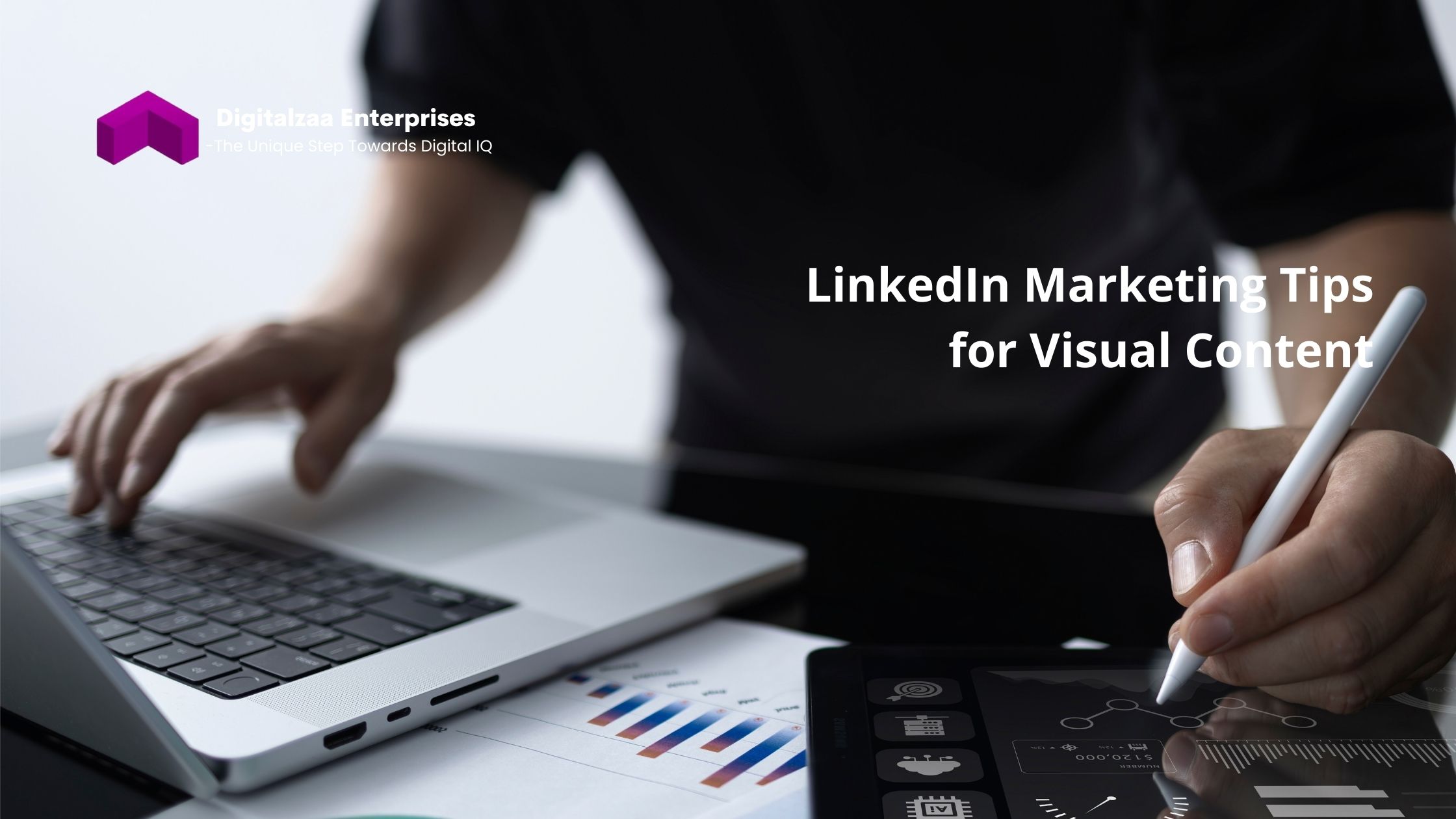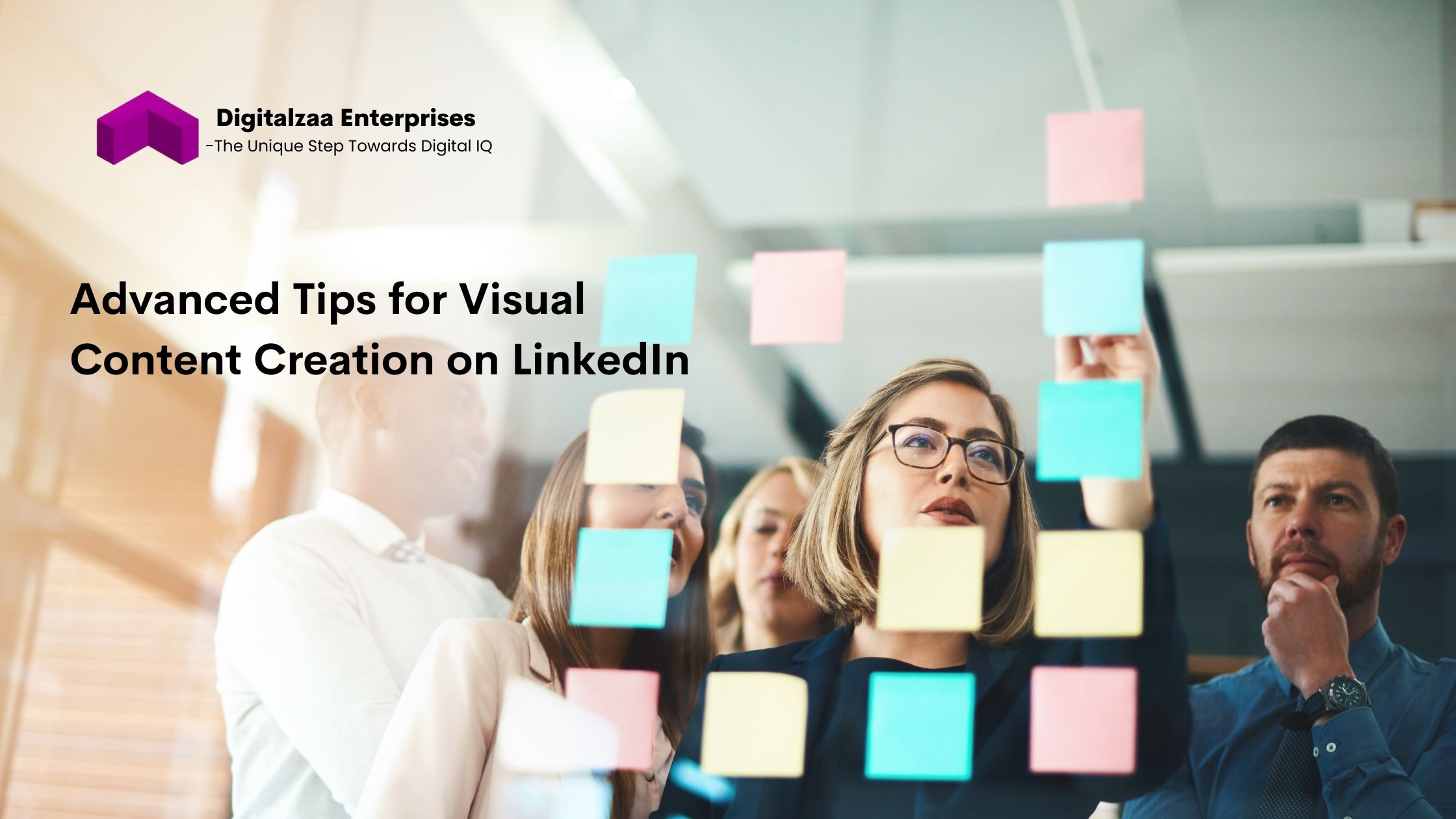How to Incorporate Visual Content on LinkedIn for Maximum Engagement

LinkedIn has evolved far beyond a professional networking platform; today, it’s an essential marketing tool for businesses, entrepreneurs, and professionals looking to build their brands and connect with their audiences. A standout strategy for thriving on LinkedIn involves harnessing the power of visual content.
When integrated effectively, visual content can elevate your LinkedIn engagement, help your posts cut through the noise, and establish your professional credibility. In this guide, we’ll explore actionable LinkedIn marketing tips, content creation tips, and strategies for LinkedIn post optimization to achieve maximum impact.
Why Visual Content is Critical on LinkedIn
Visual content has become a cornerstone of digital marketing, and for good reason. Humans process images 60,000 times faster than text, making visuals a powerful tool for grabbing attention and communicating messages effectively. Here are some key benefits of using visuals on LinkedIn:
- Enhanced Visibility: Posts with images or videos perform better in LinkedIn’s algorithm, increasing your reach.
- Better Retention: Visuals improve information retention, ensuring your audience remembers your message.
- Professional Appeal: High-quality images communicate professionalism, allowing you to stand out in a congested stream.
- Stronger Emotional Connection: A carefully chosen visual can evoke emotions that resonate with your audience.
Types of Visual Content to Use on LinkedIn
To maximize the impact of your visuals, it’s essential to choose the right types of content that align with your goals and audience preferences.
- High-Quality Images: Static images remain one of the most versatile types of visual content on LinkedIn. They’re easy to consume and can deliver a message at a glance.
- Branded Images: Use visuals that incorporate your company’s logo, color scheme, or tagline to reinforce brand identity.
- Behind-the-Scenes Photos: Showcase your company culture, events, or processes to create a human connection.
- Quote Graphics: Turn inspirational or industry-relevant quotes into shareable graphics.
- Videos: Videos are an effective tool for storytelling and engagement. LinkedIn users are increasingly engaging with video content, making it a must-have in your visual strategy.
- Educational Content: Share tutorials, how-to guides, or industry insights.
- Company Highlights: Celebrate achievements, introduce team members, or share company news.
- Customer Stories: Showcase testimonials or success stories to build credibility.
- Infographics and Presentations: Infographics and LinkedIn carousel posts (PDF presentations) are excellent for simplifying complex information and presenting it in a visually appealing way.
- Infographics: Use these to summarize reports, share statistics, or illustrate processes.
- LinkedIn Carousel Posts: Upload PDFs to create swipeable content, perfect for step-by-step guides or case studies.
LinkedIn Marketing Tips for Visual Content

Posting visual content is just one part of the equation. To truly leverage visuals for LinkedIn engagement, you need to follow specific content creation tips and strategies.
- Align Visuals with Your Brand Identity: Your visuals should reflect your brand’s tone, values, and style. Consistency in color schemes, fonts, and imagery helps your audience recognize and connect with your content.
- Optimize Visuals for LinkedIn’s Specifications: Different platforms have unique requirements for visuals. LinkedIn’s recommended specifications include:
- Images: 1200 x 628 pixels for optimal display.
- Videos: Up to 10 minutes, though shorter videos (1–2 minutes) perform better.
- PDFs: Designed for easy readability on both mobile and desktop.
- Use Captions and Headlines Effectively: Pair your visuals with compelling headlines and captions. The text should complement the visual, offering context and driving engagement. End with a compelling call to action to help your audience.
- Add Relevant Hashtags: Use hashtags strategically to increase your post’s discoverability. Combine popular hashtags like #LinkedInTips with specialist hashtags specific to your sector.
Strategies for LinkedIn Post Optimization
LinkedIn post optimization ensures they reach the right audience at the right time.
- Understand Your Audience: Know who your target audience is and what type of visual content resonates with them. Use LinkedIn analytics to determine your target audience's demographics and preferences.
- Experiment with Formats: LinkedIn supports multiple post formats. Don’t limit yourself to one type of visual content. Test:
- Single-image posts for quick messages.
- Carousel posts for detailed explanations.
- Videos for storytelling.
- Timing Matters: Posting at the correct time can dramatically increase your content's visibility. On LinkedIn, weekdays during business hours tend to be the most effective. However, analyze your specific audience’s activity to find the optimal posting schedule.
- Engage with Your Audience: Engagement goes beyond liking and sharing. Respond to comments on your posts, ask questions, and encourage your audience to share their thoughts.
Measuring the Effectiveness of Your Visual Content
Tracking the performance of your visual material is critical for improving your approach.
- Monitor Key Metrics: Use LinkedIn analytics to track:
- Impressions: How many people viewed your content.
- Engagement Rate: Likes, shares, comments, and click-throughs.
- Follower Growth: Whether your content contributes to audience expansion.
- A/B Testing: A/B testing allows you to experiment with different visuals to identify what resonates best with your audience. By testing various elements such as color schemes, fonts, video lengths, styles, and infographic layouts, you can gain valuable insights into what captures attention and drives engagement effectively.
- Adjust Based on Insights: Use the data from your analytics and A/B testing to refine your LinkedIn marketing tips. Focus on content types and styles that generate the highest LinkedIn engagement.
Advanced Tips for Visual Content Creation on LinkedIn

To take your strategy to the next level, consider these advanced techniques:
- Leverage Professional Design Tools: Use tools like Canva, Adobe Creative Suite, or Figma to create polished visuals. Professional designs can help your content stand out and establish credibility.
- Incorporate User-Generated Content: Encourage your audience to share photos, videos, or testimonials related to your brand. Featuring this content can increase authenticity and audience trust.
- Stay Updated on Trends: LinkedIn trends change over time. Stay informed about the latest visual content trends and adjust your strategy accordingly.
Avoid These Common Mistakes
Even the best visual strategy can falter if you make these errors:
- Cluttered Visuals: Overloading images or videos with text can overwhelm your audience. Keep designs clean and focused.
- Ignoring Accessibility: Ensure your content is accessible by adding alt text for images and captions for videos.
- Inconsistent Branding: A mismatch in colors, fonts, or styles can confuse your audience and weaken your brand identity.
Conclusion: Build a Strong Visual Presence on LinkedIn
Incorporating visual content into your LinkedIn strategy is no longer optional—it’s essential for success. From images and videos to infographics and carousel posts, each format has unique benefits that can boost your LinkedIn engagement.
By aligning your visuals with your brand identity, optimizing posts for the platform, and engaging with your audience, you can create a strong and memorable presence on LinkedIn. Use analytics to measure your success and continuously refine your strategy.
Take action today! Start incorporating impactful visuals into your LinkedIn posts and watch your engagement soar. Need help? Contact us to craft a winning LinkedIn content strategy tailored to your goals.


